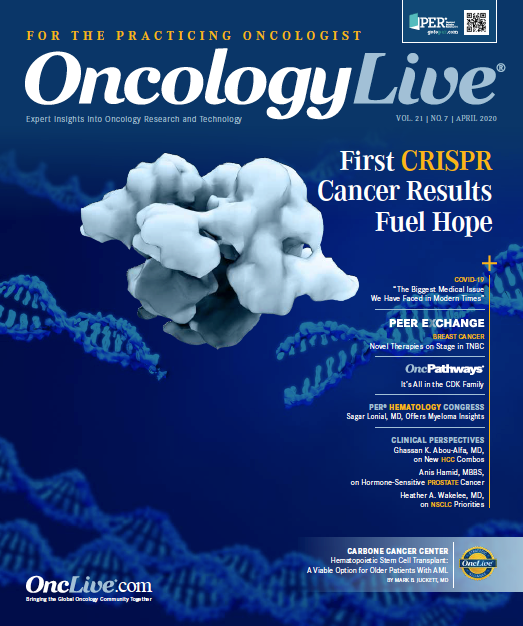Public Health Sector Groans Under Burden of Multiple Epidemics
This has been a difficult time for public health policy and regulatory organizations struggling to deal with rapidly changing and unquestionably serious societal health-related issues and concerns. The list of problems these agencies must tackle is growing, and so are the questions about the strategies that should be used to address these threats.
Maurie Markman, MD, editor in chief, is president of Medicine and Science at Cancer Treatment Centers of America and clinical professor of medicine, Drexel University College of Medicine

Maurie Markman, MD
This has been a difficult time for public health policy and regulatory organizations struggling to deal with rapidly changing and unquestionably serious societal health-related issues and concerns. The list of problems these agencies must tackle is growing, and so are the questions about the strategies that should be used to address these threats.
Let’s start with the mini-epidemic of vaping-related severe lung toxicity cases, which still are not completely understood; there have been more than 2800 cases, with 68 deaths, from the time the illnesses were first noted in August 2019, through mid-February 2020.1,2 Because of the expanding use of e-cigarette products in the United States, public health and regulatory agencies must quickly and carefully consider how such toxicities can be prevented in the future, especially with knowledge that legal, illegal, and completely unknown products are increasingly being directly inhaled into the lungs.3
Additionally, the daily news related to the spread of coronavirus disease 2019 (COVID-19) across the world, including in the United States, raises questions about how prepared government agencies and hospital facilities are for the widespread introduction of a new, highly infectious viral agent, capable of causing serious illnesses in tens of thousands, if not millions, of people worldwide.
If our ability, as a society, to motivate the population to be vaccinated against seasonal influenza is any indication, concern is legitimately heightened for how we will effectively deal with COVID-19 in this country. So far this influenza season, there have been at least 38 million illnesses, 390,000 hospitalizations, and 23,000 deaths from influenza nationwide, according to the Centers for Disease Control and Prevention.4
Although not as immediate a threat as the previously described illnesses, the stunning increase in the overall incidence of obesity in the United States is another pressing public health concern. Findings from a recently reported study indicate that by the year 2030, one-half of all adults in this country will be considered obese (body mass index [BMI], ≥30).5 Perhaps of even greater concern, investigators predict that almost 1 in 4 adults is projected to fall into the category of severe obesity (BMI, ≥35) by the same date. The implications of these statistics are simply staggering for the almost certain dramatic increase in diabetes, cardiac disease, and obesity-related malignancies, including cancers of the breast (post menopausal), endometrium, colon, esophagus, pancreas, thyroid, kidney, liver, and gall bladder.
It should be noted that these percentages are not projected to affect the population of this country equally. Unfortunately, it is the members of our society near or below the poverty threshold (annual income, <$20,000) who are at greatest risk of experiencing severe obesity― almost one-third of this population, compared with approximately 22% of individuals with a higher annual household income (≥$50,000).4 And, the group of lower-income individuals is the least likely to be able to modify diets and change other behaviors that heighten the risk of obesity.
The ongoing opioid epidemic in the United States is also relevant―specifically, the role physicians have had in helping to create this major societal health-related problem and, hopefully, subsequently control it moving forward. A provocative recent report regarding opioid prescribing patterns found that 1% of physicians in this country were responsible for fully 49% of all opioid doses. Further, this group accounted for 27% of the total number of prescriptions written.6
These data are clearly relevant to the oncology physician. Many have noted that the well-intentioned but unfocused attempts by regulatory agencies to control inappropriate opioid use has the potential to cause harm to a critical segment of the population of patients with cancer (eg, those receiving hospice and end-of-life palliative care) who may require regular and frequent administration of moderate or large doses of opioid medications to ensure adequate and essential pain control.
What Should the FDA Do?
Although this commentary can barely scratch the surface of the multiple complex issues involving regulatory agencies, we should consider what role the FDA should play in these major societal health-related concerns. What should be the FDA’s focus in the future, from regulating tobacco and vaping products; to ensuring public safety; to permitting companies to market products, such as nutritional supplements for weight reduction, they claim favorably affect health?
The critical role of the FDA in multiple areas cannot be overstated. Even an area as apparently mundane as the general safety of sunscreens, and the various claims made by the manufacturers of those products, requires scrutiny by this agency. Of course, the value of reducing the risks associated with excessive direct sun exposure with the goal of preventing skin cancers is a clear and unquestionable benefit associated with their routine and regular use. But are these products actually safe? Findings from a recent report raised this question and possible concern. Investigators evaluated 6 active ingredients (avobenzone, oxybenone, octocrylene, homosalate, octisalate, and octinoxate) in 4 sunscreen formulations and found that all were measured within plasma at concentrations that “surpassed the FDA threshold for potentially waiving some of the additional safety studies for sunscreens.”7
Although it would be inappropriate to conclude that these products are unsafe based on these limited data, it would be equally unwise to declare that these widely used items are completely safe. It should be the responsibility of the FDA to work with the manufacturing community to provide a clear answer to the public.
References
- Blount BC, Karwowski MP, Shields PG, et al. Vitamin E acetate in bronchoalveolar-lavage fluid associated with EVALI. N Engl J Med. 2020;382(8):697-705. doi: 10.1056/NEJMoa1916433.
- Outbreak of lung injury associated with the use of e-cigarette, or vaping, products. Centers for Disease Control and Prevention website. cdc.gov/tobacco/basic_information/e-cigarettes/severe-lung-disease. html. Updated February 25, 2020. Accessed March 17, 2020.
- King BA, Jones CM, Baldwin GT, Briss PA. The EVALI and youth vaping epidemics—implications for public health. N Engl J Med. 2020;382(8):689-691. doi: 10.1056/NEJMp1916171.
- Fluview. Weekly US Influenza Surveillance Report. Centers for Disease Control and Prevention website. cdc.gov/flu/weekly/. Updated March 7, 2020. Accessed March 17, 2020.
- Ward ZJ, Bleich SN, Cradock AL, et al. Projected US state-level prevalence of adult obesity and severe obesity. N Engl J Med. 2019;381(25):2440-2450. doi: 10.1056/NEJMsa1909301.
- Kiang M, Humphreys K, Cullen MR, Basu S. Opioid prescribing patterns among medical providers in the United States, 2003-17: retrospective, observational study. BMJ. 2020;368:16968. doi: 10.1136/bmj.16968.
- Matta MK, Florian J, Zusterzeel R, et al. Effect of sunscreen application on plasma concentration of sunscreen active ingredients. JAMA. 2020;323(3):256-267. doi: 10.1001/jama.2019.20747.




